
America has been using more substance during the COVID-19 pandemic, a result of increased stress and isolation. We are starting to glimpse the repercussions of these dynamics. There is early evidence of the consequences of heavier use across our society. The Los Angeles Times recently reported that hospitals affiliated with the University of Michigan, Northwestern University, Harvard University and Mount Sinai Health System in New York City report admissions for alcoholic liver disease have leapt by up to 50% since March of 2020. According to this Express Scripts Report in April of 2020, the use of Benzodiazepines, which can be highly addictive, spiked 34% in the early weeks of the pandemic. Forbes reports that COVID-19 had helped drive sales for cannabis to record levels, up 40% more on average in comparison to 2019. People numb feelings to try to feel better.
However, all such drug use will have consequences, it falls under the unwavering Law of Brain functioning.
While brain science is complex, the dynamics are simple. Neuroscientist and person in recovery Dr Judy Grisel explains it well in this TED talk, and in her NYT bestselling book, Never Enough: The Neuroscience and Experience of Addiction. Drug use is borrowing good feelings from the future. It is the law of brain function because the brain continually seeks equilibrium. The more substances you use, the better you feel at first. You pay the next day by feeling a little blue, even when you use in moderation. Use long enough and tolerance develops so that you need to use to feel normal.
Your brain chemistry works to level things out. This causes some weird things to happen. Generally speaking, you get an opposite effect in the “pay back” process. You take something to get high, you feel low when it wears off. Take something to relax and you get increased anxiety afterwards. In respect to opioids, as this Harvard Medical School blog article notes, “opioids paradoxically increased sensitivity to pain and made pre-existing pain worse, and higher doses of opioids were associated with higher sensitivity to pain.” We also know that Benzodiazepines, used long term actually increase anxiety as noted by this American Family Physician article. The bottom line is there is no such thing as a free lunch, even in brain science. As much as we would all like one, it does not exist. The Piper to pay.
For most people, they experience this boomerang effect of paying for the good feeling at a later time and they end up moderating their use, either on their own or with some help. This often happens when it gets in the way of things that the person likes, and when weighing out costs and rewards, the person moderates their use accordingly.
Beyond this, we seem to be losing a sense of the distinction between different intensities of SUDs following adoption of the DSM-V. It is nearly impossible with current diagnostics to tell an early stage severe on the path to being unable to moderate use from a less severe form of SUD. It is even my sense we are beginning to minimize what this means for persons with the most severe form of SUD, which I think of as addiction. This too shall have consequences.
Something different is happening in the brain of an addicted person – one with a severe substance use disorder. As this NIH article notes “Brain imaging studies of people addicted to drugs or alcohol show decreased activity in this frontal cortex,” says Dr. Nora Volkow, director of NIDA. “When the frontal cortex isn’t working properly, people can’t make the decision to stop taking the drug—even if they realize the price of taking that drug may be extremely high, and they might lose custody of their children or end up in jail. Nonetheless, they take it.” The majority of us who have this move from one substance to others or mix substances when one stops working. Our drug policy ignores this dynamic and tends to focus on single substance interventions.
Forgive the winding nature of this post. Back to that piper. As a society, there seems a steadily increasing shift towards more permissive drug policy, and I understand the dynamics in play that influence this strengthening trend. It is also true that for most people, even those with mild or moderate forms of substance use disorders, the price to pay the piper, although high, may not be quite as high as for people like me who have the severe form. While the piper will always need to be paid, the debt due is much higher for persons who are addicted. We pay with our lives and everything else we have along the way unless we get help. The early data already shows that this is already happening.
Trauma, isolation and increased despair are all factors in the increased number of people who are now struggling or who will be struggling in the coming years. Addiction related consequences take a long time to present themselves. Yet even now there is little doubt that addiction related COVID deaths will surpass deaths from the virus in the coming years. We should be having some sober conversations about the magnitude of what is coming at us and prepare accordingly.
The pandemic should have taught us the importance of addressing public health challenges in a timely and systematic manner. Are we listening? The debt is coming, and the piper will wait, whose children will he take? Assume he comes for your child because “those people” are in reality all “our people.”
Everyone of “them” is worth saving.

“Not everything that can be counted counts and not everything that counts can be counted.”
Albert Einstein
These last few weeks I’ve seen several people writing on the subject of substance use disorder treatment calling for us ‘to stick with the evidence’ of what works. Research evidence should, quite rightly, inform policy and practice.
There’s an assumption underlying this premise and it’s a big one. The hierarchical ladder of research methodology is based on the scientific method and on the premise that it is possible to understand the world in which we live in terms of cause and effect. As it turns out, life’s a bit more messy.
The randomised controlled trial (RCT)
In terms of effective research structures, the randomised controlled trial (RCT) stands tall. It’s the typical standard that researchers use to reassure us that an intervention is causing an effect. In my GP days I was involved in RCTs exploring medications for various health conditions – they often shifted practice to improve treatment outcomes for patients.
Methodologies like the RCT provide results that can lead to evidence-based practice. In medicine this has been defined as:
The conscientious, explicit, and judicious use of current best evidence in making decisions about the care of individual patients.
Sakett et al, BMJ 1996
I’ll draw your attention to the word ‘current’. Here’s the thing: we don’t know what we don’t yet know. We’re even less likely to get to know it if we’re not looking for it. The evidence base for interventions is undeniably not complete, which means when people say, for example, ‘there’s no evidence that residential treatment works to help people achieve their goals’, it doesn’t mean that residential treatment does not help people achieve their goals. In fact as many have shown, there is evidence for residential treatment but it does need to be better developed. One might question why the evidence lags a bit. Is it because few are looking for it?
Recovery and the randomised controlled trial (RCT)
When the Scottish Government began to develop its previous drugs strategy in 2007, (The Road to Recovery) resistant voices claimed that there was ‘no evidence’ to support recovery. They cited data to show that, in terms of the evidence base, opioid replacement therapy was the most solidly-based treatment for those with opioid use disorder.
There is generally agreement that those voices were right in terms of where the weight of the evidence lay. But the issues are more nuanced that they might first appear. If you look at the end points studied: reduction in illicit drug use, reduction in deaths, reduction in blood-borne virus transmission and reduction in crime, then of course the evidence is there. That’s good and well, but when you begin to examine quality of life outcomes the evidence looks less solid. As I’ve stated before, I believe in medication assisted treatment (MAT), but I’m also open to examining its shortcomings. In the British Medical Journal, Sanger and colleagues (2018) wrote:
Recent guidelines indicate there is little consistent evidence to evaluate the effectiveness of MATs. Reviews evaluating MAT effectiveness have found great variability in outcomes between studies, making it difficult to establish a real treatment effect. Each study measures a different set of treatment outcomes that define success in arbitrary or convenient terms.
The authors continue:
This is a substantial limitation in addiction research that must be overcome to reach a consensus on which treatment outcome domains should be the goals. So even when the evidence appears strong, there are still issues to be resolved.
When it comes down to recovery research evidence, it’s not only that the research focus is not on recovery – part of the issue is that it’s also hard to pin down precisely what recovery means, which makes it difficult to study. Nevertheless, in 2010, the review of the evidence base – Research for Recovery – found that there was evidence to support recovery.
A problem with the evidence imbalance is that medicalised treatment is easier to study than complex, multiple-stranded psychosocial interventions. One lends itself to the RCT and one does not. Furthermore, if all you study are medication-based interventions it’s obviously correct to say that’s where the evidence lies (although, as before, there are legitimate questions about which end points you use to cite efficacy). But what matters to researchers and the public health agenda may not be what matters to patients. So are we missing things that count?
RCT strengths and weaknesses
In his book Circles of Recovery, Keith Humphreys lays out the strengths and weaknesses of the RCT. He points out that it has high internal validity – a strength. This means we can make robust inferences about a treatment effect. He goes on to make the point that there are difficulties with generalisability and utility.
RCTs will usually have inclusion and exclusion criteria. In terms of the trial, who is allowed to join it will limit how far we can apply the findings in everyday practice. As I say, I’ve been involved in research using RCT methodology. Typically we will exclude people with major physical health problems (e.g. hepatitis C) and major mental health disorders (e.g. depression, self-harm, personality disorders, eating disorders, bipolar disorder, past history of psychosis etc). In other words, we exclude the sort of people we see every day in our work. Typical patients. This has an impact on what happens when we apply the research to real-life practice.
Generally you need to get large numbers of people enrolled in RCTs to ‘power’ them. Large populations mean you establish ‘central tendencies’. The evidence that is gathered might not be applicable to individuals – in other words to you and me: it’s not necessarily ‘externally valid’.
Then there’s bias – pharmaceutically-funded studies tend to favour the medication being trialled, all of us have our own acknowledged or hidden biases and there are too many bits of research unpublished because they didn’t show the ‘right’ results. Bias and spin can also affect what folk do with study evidence. It’s not hard to rubbish research and it’s not hard to bend it to make it appear to say something it actually doesn’t say or to fail to highlight uncomfortable findings.
Fortunately, RCTs are not the only way to get accurate results. Humphreys says, ‘The common conviction that RCTs always generate more accurate estimates of treatment effects is simply incorrect.’ However, the grading of evidence is biased towards RCTs meaning that other useful research may be inadequately considered or overlooked (Irving et al, 2017).
Opportunities and challenges
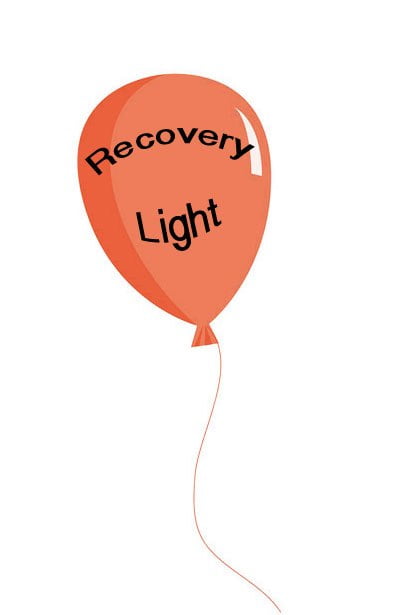
So, in addiction and recovery research we need to be careful how we set up research and how we interpret and use it. Being overconfident can be harmful, just as ignoring the evidence can be. We need to be open to other ways of evidencing the impact of treatment and recovery community support and interventions.
We can get caught up in that catch 22 that the RCT is not the best methodology for studying recovery interventions and processes. Yet, we’ll still look almost exclusively to RCTs or ‘high rungs’ on our evidence ladder for evidence to guide our practice.
Practice-based evidence
One way of reframing evidence-gathering is to use the concept of practice-based evidence. In this approach, ‘the real, messy, complicated world is not controlled’ (Swisher, 2010). ‘Patients are not controlled as research subjects, who must meet certain inclusion/exclusion criteria. Rather they are grouped together by factors they share. This type of research respects that people are complex, and don’t readily fit the “cause and effect” model of science.’
This answers a different question to ‘does X cause Y’. This different question is more interested in what’s happening with the individual and their world, however messy. On top of this, we should be involving patients in setting research outcome points and then measuring the intervention against what matters to the patient.
Here we go again
After years of neglect, residential rehabilitation in Scotland has just had a significant increase in resource. Some are saying that this is an example of an intervention with a poor evidence base and suggesting that the resource would be better used elsewhere ‘in evidence-based interventions’. What a blind spot we continue to have.
You see, the tragic thing is that we were asked to improve the evidence base in 2010 with a plea for research into longer term outcomes, after the Scottish Government published its review of the evidence base on recovery. Then in 2012 the Chief Medical Officer at the time, Sir Harry Burns, asked the independent Drug Strategy Delivery Commission (DSDC – an advisory group to government) to undertake a review of opiate replacement treatments (MAT), but also to consider the concerns that had been raised:
“In particular what research evidence existed to allow objective evaluation of the relative benefits of residential rehabilitation interventions and how widespread was their use in Scotland.”
The DSDC identified the lack of recovery research in Scotland and suggested that this should be addressed. Examples of what might be done were: examining the effectiveness of abstinence programmes and long term outcomes – and examining staff attitudes and recovery. I was a member of the DSDC at the time and expressed my concern that a new research strategy for Scotland should be balanced and not mostly focussed on harm reduction and medical interventions. The report, published in 2013, states:
Academics interviewed, repeatedly acknowledged the urgent need for better research into the effectiveness of a whole range of treatments and interventions which may influence the development of or recovery from problematic substance use.
Neglect
In terms of research, residential rehab, mutual aid, lived experience recovery organisations (LEROs) and community recovery programmes have been largely neglected. We have generally seen neither a sense of urgency nor ‘better research’. Recovery interventions and processes may be more complex and messy to study, but that doesn’t mean we should not try. Just as we need balance in our treatment system, we need balance in addiction research. As Swisher (2010) says, ‘We [must] return to practice informing research, and research informing practice. They are an inseparable team and neither element is complete on its own.’
If we’ve not got that balance, interventions like residential treatment will continue to be branded as ‘not evidence-based’, even as people are healed and lives transformed within their walls.
Continue the discussion on Twitter @DocDavidM
Irving M, Eramudugolla R, Cherbuin N, Anstey KJ. A Critical Review of Grading Systems: Implications for Public Health Policy. Eval Health Prof. 2017 Jun;40(2):244-262. doi: 10.1177/0163278716645161. Epub 2016 May 10. PMID: 27166012.
Sanger N, Shahid H, Dennis BB, Hudson J, Marsh D, Sanger S, Worster A, Teed R, Rieb L, Tugwell P, Hutton B, Shea B, Beaton D, Corace K, Rice D, Maxwell L, Samaan MC, de Souza RJ, Thabane L, Samaan Z. Identifying patient-important outcomes in medication-assisted treatment for opioid use disorder patients: a systematic review protocol. BMJ Open. 2018 Dec 4;8(12):e025059. doi: 10.1136/bmjopen-2018-025059. PMID: 30518592; PMCID: PMC6286642.
Swisher AK. Practice-based evidence. Cardiopulm Phys Ther J. 2010;21(2):4.

Next in the Life Beyond Addiction series is LeNita Eatmon, who found SMART through Above & Beyond Family Recovery Center in Chicago, Illinois. What stood out about SMART to LeNita was the change in thinking and learning to quickly reassess situations in a positive way.
Subscribe to the SMART Recovery YouTube Channel
Video storytelling is a powerful tool in recovery, and we are proud to share our SMART Recovery content free-of-charge, available anywhere, on any device. Our videos hope to inform, entertain, and inspire anyone in the recovery community.
Subscribe to our YouTube channel and be notified every time we release a new video.
PLEASE NOTE BEFORE YOU COMMENT:
SMART Recovery welcomes comments on our blog posts—we enjoy hearing from you! In the interest of maintaining a respectful and safe community atmosphere, we ask that you adhere to the following guidelines when making or responding to others’ comments, regardless of your point of view. Thank you.
- Be kind in tone and intent.
- Be respectful in how you respond to opinions that are different than your own.
- Be brief and limit your comment to a maximum of 500 words.
- Be careful not to mention specific drug names.
- Be succinct in your descriptions, graphic details are not necessary.
- Be focused on the content of the blog post itself.
If you are interested in addiction recovery support, we encourage you to visit the SMART Recovery website.
IMPORTANT NOTE:
If you or someone you love is in great distress and considering self-harm, please call 911 for immediate help, or reach out to The National Suicide Prevention Hotline @ 800-273-8255, https://suicidepreventionlifeline.org/
We look forward to you joining the conversation!
*SMART Recovery reserves the right to not publish comments we consider outside our guidelines.*
Subscribe To Our Blog
Join our mailing list to receive the latest news and updates from the SMART Recovery Blog.
You have Successfully Subscribed!

Volunteer Month is a nationally recognized month for nonprofits to acknowledge and thank volunteers for their efforts and to encourage further volunteerism.
We have an exciting month planned that will celebrate and recognize your efforts as dedicated volunteers, raise funds and gather applications for the SMART Recovery Training Scholarship Fund, as well as showcase the many ways we are working to better support you in growing SMART’s presence in your local community.
We are looking forward to a great Volunteer Month! Please plan to join us for the festivities.
Save the Date! Volunteer Month Kickoff Event (Volunteers Only)
This year, we will kick off Volunteer Month with a volunteer-only Town Hall event. Mark your calendars for:
Wednesday, March 31 at 1:00 p.m. ET
Employees Melina Gilbert and Molly Princic will lead the discussion, sharing information on SMART Recovery’s:
- Appreciation for all that you do!
- Volunteer Month 2021 plans and events
- 2021 Training Scholarship Fund – fundraising and scholarship application process
- Strategic Plan – upcoming presentation to the community
- VolunteerHQ Phase 2 launch – Volunteer Resources
- Opportunities to get more involved as a volunteer
The Zoom event is free with registration. Additional details will be released later this month.
Volunteer Month:
Special Events Calendar
Join us for these other Volunteer Month special events:
- Fundraising to support the scholarship fund: April 1–15
- Launch of VolunteerHQ Phase 2 (Volunteer Resources): Wednesday, April 7
- Strategic Plan Presentation: Monday, April 12
- Training Scholarship applications accepted: April 16–30
- Webinar: Becoming a Volunteer: Wednesday, April 21
- SMART Meeting Management (SMM) calls throughout the month
Looking forward to seeing you throughout the month!
Subscribe To Our Blog
Join our mailing list to receive the latest news and updates from the SMART Recovery Blog.
You have Successfully Subscribed!
It seems that during recent years, within the substance use disorder arena, there has been a trend toward changing views about: substance use, sobriety, abstinence, the harms of use, harm reduction, recovery, pathways of personal improvement, problematic use, and addiction illness itself.
While advancements, improvements, and innovations are welcome, what should be preserved?
And how can one go about guiding change or the process of development within our various systems?
In this essay concerning the substance use disorder sector, I will:
- Outline what seem to be current priorities in public policy, research, clinical care, and the education of clinical professionals;
- List what seem to be considered four pests impeding that advancement; and
- Provide three thoughts that can be held as considerations toward retaining the value of the old, while establishing the new1.
Priorities in the direction we are heading
We seem to be moving toward:
- Formalizing what I have called “Addiction Hospice” (palliative SUD care, both as a clinical process and as an endpoint goal).
- For those unfamiliar with the sort of thinking reflected in my phrase “Addiction Hospice” you might want to read a paper5 from the New England Journal of Medicine that focuses on the hospice model applied to SUD’s. And you might be interested in another paper6 that applies that model more generally, across various problem areas.
- Toward supplying a back story, I’ll say that I started to identify this trend and called it “Addiction Hospice” around 2007 or so (during the final years of our Behavioral Health Recovery Management project2,3,4).
- By that time in the BHRM project our agency’s programming had moved beyond clinically-derived care, and beyond person-centered care. We had become person-driven.
- Our services were so tipped toward allowing patient preferences to drive care that both fidelity to core evidence-based practices and the potential benefits of using evidence-based approaches were too often largely lost in the wider framework of doing what the patient said and wanted.
- The ever-widening distribution of addiction hospice as an individual care plan, treatment program component, treatment program total identity, and as a presumptively-applied framework of care to the unnecessary and a priori exclusion of other menu options.
- Efforts in ignoring the harms of use7.
- Decriminalization of all street drugs.
- Movement of street drugs into existing structures of research and development for corporate manufacture and sales (e.g. hallucinogenic mushrooms as medicine).
- Expansion of regulatory controls and scheduling of pharmaceutical compounds not formerly recognized as having significant addiction potential (e.g. gabapentin).
- Loosening of regulatory controls for substances with long-known and serious addiction potential when of pharmaceutical-grade (e.g. heroin).
- Increasing entrenchment in the overlooking of cigarette smoking as an addiction to treat during addiction treatment and death rates from cigarettes far surpassing those of the opioid epidemic and COVID-19, while claiming approaches like MAT and the Physician Health Program (PHP model) that allow cigarette smoking are a “Gold Standard” approach8.
Four Pests
Meanwhile, we seem to be moving incrementally toward deciding four particular things are pests.
- Recovery, both as a goal and as a process9.
- Sobriety (its functional significance) and Abstinence (its efficacy and value, vs. its safety and vs. one’s ability to tolerate it)10.
- Addiction illness (the construct)11, 12.
- Treatment (its indications and its current forms)13.
 photo by Laitche
photo by Laitche
I have two questions for the reader to consider:
- Are “recovery”, “sobriety/abstinence”, “addiction illness” and “treatment” really pests?
- How is the history of the eradication of pests relevant to our work?
Concerning the priorities and directions I noted above, I have three cautionary thoughts to offer. We could hold the considerations I will provide as thoughts, or as questions. We could use them for the purpose of helping us guide both overall change and the process of development within our various systems.
Three Cautionary Thoughts
- Chesterton’s Fence14.
- The basic notion of this principle is to find out why a fence was put in place and consider that reason before removing it. Those arriving late might simply see a fence as serving no useful purpose and remove it.
- We could apply this principle to our sector and propose some questions before we eliminate fences. Should the fence of abstinence or sobriety simply be removed? Should the fenced area of treatment be removed? Should the fence dividing addiction illness specifically from substance use disorders generally be taken away? Should the area inside recovery be the same as the area outside recovery?
- A mouse utopia resulting in colony collapse15.
- In this famous study, an ideal living environment was provided to a small initial number of breeding pairs of mice (including unlimited food and water, carefully planned ample space, and recreational opportunities).
- Self-harm, violence to others and cannibalism soon began. Interactions grew worse, and reproduction stopped.
- Even though ample space for a thousand more was available, a final brood of pups was born, and no more reproduction occurred. The birth of the last brood of pups was the marker for, and date of, “colony death”.
- Researchers could only surmise that without having a sufficient behavioral struggle for survival (individual purpose), the colony collapsed despite ideal conditions.
- The destructiveness of raccoons in Japan. The history of this invasive species in Japan is one of damaging long-standing existing structures, filling limited natural habitat, and harm to crops16. To me, “structures”, “natural habitat” and “crops” are metaphors of general and specific kinds of recovery capital.
I ask the reader: “What of our existing SUD structures, habitats, and other resources worth preserving?”
A Personal Note of Historical Reflection
I grew up in Hong Kong in the 1970’s. During most of my time living in HK the ruler of China was Mao.
During my childhood I heard many first-hand accounts of the “Four Pests” or “Four Enemies” Campaign. The amazing accounts I heard centered on the giant magnitude of the:
- folly of the idea,
- waste of the effort, and
- destructiveness of the consequences caused by trying to achieve it.
What was the “Four Pests Campaign”?
The Four Pests Campaign was one of the first actions taken in the Great Leap Forward in China from 1958 to 1962. The four pests to be eliminated were rats, flies, mosquitoes, and sparrows. The extermination of sparrows is also known as Smash Sparrows Campaign or Eliminate Sparrows Campaign which resulted in severe ecological imbalance, being one of the causes of the Great Chinese Famine. In 1960, Mao Zedong ended the campaign against sparrows and redirected the fourth focus to bed bugs.
By April 1960, Chinese leaders changed their opinion due to the influence of ornithologist Tso-hsin Cheng who pointed out that sparrows ate a large number of insects, as well as grains. Rather than being increased, rice yields after the campaign were substantially decreased. Mao ordered the end of the campaign against sparrows, replacing them with bed bugs, as the extermination of sparrows upset the ecological balance, and insects destroyed crops as a result of the absence of natural predators.
By this time, however, it was too late. With no sparrows to eat them, locust populations ballooned, swarming the country and compounding the ecological problems already caused by the Great Leap Forward, including widespread deforestation and misuse of poisons and pesticides. Ecological imbalance is credited with exacerbating the Great Chinese Famine, in which 15–45 million people died of starvation. The Chinese government eventually resorted to importing 250,000 sparrows from the Soviet Union to replenish the population.17
 photo by Andreas Trepte
photo by Andreas Trepte
While preparing this blog post, I did a Google search of the term “Four Pests Campaign”. One of the very first results was the National Library of Medicine at the NIH. Below I added their entire verbatim entry for the “Four Pests Campaign”. Here it is:
HEALTH FOR THE PEOPLE: Continuity and Change in Asian Medicine. Beginning in the 1950’s, the Chinese state mounted the Patriotic Health Campaigns to improve sanitation and public health. In 1958 the campaigns focused on “the four pests”: rats, sparrows, flies and mosquitoes. Later sparrows were removed from the list, and fleas and lice were added. Snails were particularly targeted for eradication because they carried the debilitating disease of schistosomiasis. In addition to spreading disease, these vermin also ate food, chewed electrical wires, and thus disrupted the social fabric that Mao Zedong was trying to build in China. The campaigns were short-lived and unsuccessful – more enduring were the efforts to improve water quality and waste treatment, which led to dramatic reductions in the epidemic diseases of cholera, plague and typhoid.
What this description omits is personally shocking to me, especially compared to the first-hand accounts I heard of the activities undertaken and the folly of effort, not to mention the horrible human and environmental consequences that were suffered, and the easily available historical information fundamental to the events that the entry does not include.
 Alamy stock photo
Alamy stock photo
It turned out that sparrows did not eat so much rice that the sparrows were harmful to the people in rice production. Rather, the planners learned the very hard way that sparrows ate enough insects to be helpful for rice production.
What negative consequences will we experience if we succeed at the eradication of recovery, sobriety and abstinence, addiction illness, and treatment? Or if we reduce them to the status of uncommon, rare, endangered, or nearing extinction? Would the idea of their removal be seen later by historians as folly? As wasted effort?
By contrast, my hope for our work with people in the SUD space is summarized in my series titled Addiction and the Stages of Healing18. In short my hope is that we continue to improve and expand safe, effective, and available help of all kinds, for all people, in all stages of “ready, willing, and able”19.
And my hope is that rather than see them as pests:
- recovery, and sobriety/abstinence would be valued as natural resources;
- addiction science and recovery science in all its forms (empirical, experiential, phenomenological, ethnographic, etc.) would be valued as differing knowledge-based resources20,21,22
- and the wide variety of specialty approaches to treatment would be valued and retained on the tray of potentially helpful tools while new ones are developed.
I hope we develop large stores of ample resources across a wide variety of kinds.
- Do we want our grain silos empty (starvation) or full (ample supply available)?
- Do we want our silos of history lost (starved of knowledge and wisdom) or full (ample supply readily available)?
 photo by Leaflet – Own work, CC BY-SA 3.0
photo by Leaflet – Own work, CC BY-SA 3.0
- What current resources are being eliminated? What will we lose next as a result of those losses?
- What up-stream mechanisms in the production of recovery capital are important? What up-stream factors brought our current recovery capital about? Should those factors and resources be preserved?
- Concerning individual wellbeing, what inter-connected resources and factors are under-valued due to over-familiarity? And which should we preserve rather than eliminate as so-called “pests”?
To close, I would like to suggest that everyone should consider reading a blog post at Recovery Review titled, “The Seed Vault of Recovery History and Our New Recovery Advocacy Movement” (Stauffer, 2020).
References
1Coon, B. (2020). Older Model 2.0, Newer Model 3.0. Recovery Review.
2Boyle, M.G., White, W.L., Corrigan, P. W. & Loveland, D. L. (2001). Behavioral Health Recovery Management: A Statement of Principles.
3Great Lakes Addiction Technology Transfer Center. (2007). Frontline Implementation of Recovery Management Principles: An Interview with Michael Boyle by William L. White.
4Kelly, J. F. & White, W., Eds (2010). Addiction Recovery Management: Theory, Research and Practice. Humana Press.
5Caruso Brown, A. E. (2020). Treating Addiction as a Terminal Disease. New England Journal of Medicine. 328:3. DOI: 10.1056/NEJMp1909298
6Ebenau, A., Dijkstra, B., Stal-Klapwijk, M., ter Huurne, C., Blom, A., Vissers, K. & Groot, M. (2018). Palliative Care for Patients with a Substance Use Disorder and Multiple Problems: a Study Protocol. BMC Palliative Care. 17:97
7Coon, B. (2019). Harms of Use: A List of References. Recovery Review.
8Coon, B. (2020). One, Two, or None? Recovery Review.
9Coon, B. (2020). Addiction Counselors Should Become Familiar with “Recovery”. Recovery Review.
10Coon, B. (2020). Should We Include a Moral Dimension? The Aesthetics and Anesthetics of Addiction. Recovery Review.
11Coon, B. (2020). What IS Addiction? Recovery Review.
12Coon, B. (2019). “The Big 5” Substance Use Disorder Criteria. Recovery Review.
13Coon, B. (2021). Stigma, humanizing terms, and taking on hostility: A little more. Recovery Review.
14https://fs.blog/2020/03/chestertons-fence/
15Calhoun J. B. (1973). Death Squared: The explosive growth and demise of a mouse population. Proceedings of the Royal Society of Medicine. 66(1 Pt 2), 80–88.
16Ikeda, T., Asano, M. Matoba, Y. & Abe, G. (2004). Present Status of Invasive Alien Raccoon and its Impact in Japan. Global Environmental Research. 8(2): 125-131.
17Wikipedia. Retrieved from the World Wide Web on 03/10/2021.
18Coon, B. (2019). Addiction and the Stages of Healing. Recovery Review.
19Coon, B. (2020). Peer Support, or Harm Reduction, or Recovery Coaching? Recovery Review.
20Coon, B. (2020). Research Describes Everyone and Applies to No One. Recovery Review.
21Coon, B. (2020). Recovery: let’s do the math. Recovery Review.
22Coon, B. (2021). Recovery: What is it Good For? Recovery Review.
Suggested Reading
Ortega y Gasset, J. (1932/1994). The Revolt of the Masses. W. W. Norton.
Smith, D. W., Stahler, D. R.. & MacNulty, D. R. (2020). Yellowstone Wolves: Science and Discovery in the World’s First National Park. University of Chicago Press.
Stauffer, B. (2020). The Seed Vault of Recovery History and Our New Recovery Advocacy Movement. Recovery Review.
Acknowledgments
The author thanks Jason Schwartz, Todd Tillman, and Joe Najdzion for comments on previous versions of this writing.

Molly Princic is the SMART Recovery Online (SROL) Support Manager in the Volunteer & Meeting Resource Management Department. As Molly puts it, that means the online community is her area, “I help with all things SROL—working with a small group of volunteers, known as the Leadership Team, who represent one of the three online communities—Meetings, Message Board, and Chat.” She works with this Leadership Team to improve their platforms and offers technical support to participants as needed. Molly also works closely with SROL volunteers, helping them enjoy and embrace their roles.
As far as landing at SMART, Molly knew she wanted to do something to help people, not just have a job to simply make a living. She finished her Bachelor’s degree at age 20, but the jobs she held weren’t really fulfilling. She says SMART is different, “…it doesn’t feel like just a place that I work at, but it is fulfilling for me to be involved in an organization that works toward something that is bigger than myself.” She loves when she gets calls where someone is having a hard time and she can help them in some way.
Here are Molly’s responses to Take 5 Spotlight questions:
- Are there tasks you perform regularly during your work day?
I grant access to restricted access forums in SROL, help issue Zoom licenses, and provide general tech support. In the future I’ll also be designing training and developing support resources for SROL volunteers. - What are a couple of the ways you interact and coordinate your job with other national office staff?
SMART Recovery is about peer support and it really shows in the office. We are like a little family; we all watch out for each other. Katie [Mackey] taught me how to answer the general tech support email and then we did training together to learn the SROL platform more in depth. Melina [Gilbert] and I work very closely together to make sure that everything in the face-to-face world is aligned with the online world and vice versa. When I started, I was on the national office call center team, and they made it possible for me to transition into SROL. SMART is very cohesive and we work together very well! - What is one of the ways that you think you personally make a difference at SMART Recovery?
Helping people when they first get to SROL. Technology in combination with the life conditions that bring someone to SMART can initially be very overwhelming for new comers. I work to help them understand how SROL works and hopefully show them that the National Office truly there to help support them. - What is your message to all those dedicated SMART volunteers across the country?
There isn’t enough we could do to thank you! While the national office is the core organizer, it’s our volunteers that are the conduits for change. There are lots of things which volunteers do to help the national office beyond meetings—volunteers increase the impact we make for the greater good. - What kinds of things are you interested in outside of work?
I spend a lot of time working on self-care, you have to take care of yourself if you want to be able to help others. For me this shows up as meditation, reading, music, yoga, traveling and spending time in nature.

Between taking care of herself and helping others, Molly Princic is the kind of person making a difference in the world of SMART—and beyond!
PLEASE NOTE BEFORE YOU COMMENT:
SMART Recovery welcomes comments on our blog posts—we enjoy hearing from you! In the interest of maintaining a respectful and safe community atmosphere, we ask that you adhere to the following guidelines when making or responding to others’ comments, regardless of your point of view. Thank you.
- Be kind in tone and intent.
- Be respectful in how you respond to opinions that are different than your own.
- Be brief and limit your comment to a maximum of 500 words.
- Be careful not to mention specific drug names.
- Be succinct in your descriptions, graphic details are not necessary.
- Be focused on the content of the blog post itself.
If you are interested in addiction recovery support, we encourage you to visit the SMART Recovery website.
IMPORTANT NOTE:
If you or someone you love is in great distress and considering self-harm, please call 911 for immediate help, or reach out to The National Suicide Prevention Hotline @800-273-8255, https://suicidepreventionlifeline.org/
We look forward to you joining the conversation!
*SMART Recovery reserves the right to not publish comments we consider outside our guidelines.*
Subscribe To Our Blog
Join our mailing list to receive the latest news and updates from the SMART Recovery Blog.
You have Successfully Subscribed!
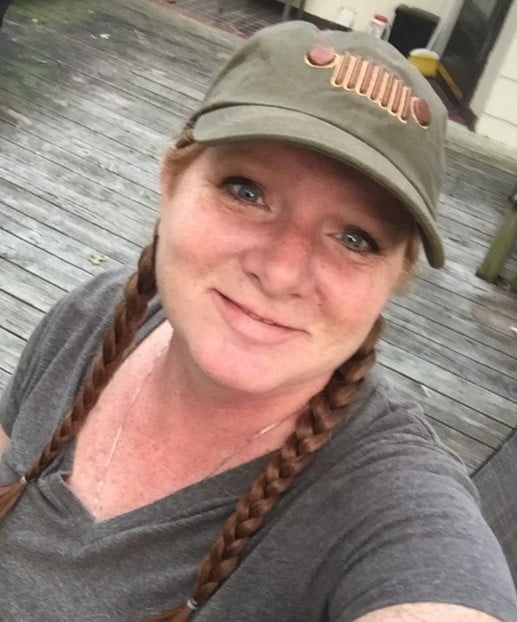
Melina Gilbert is SMART’s Volunteer Support Manager in the Volunteer & Meeting Resource Management Department. She says that means exactly what it says, “The job title speaks for itself. My job is to make sure our volunteers have the supports they need to start and maintain their SMART Recovery meetings.” This includes offering support and resources to increase volunteer satisfaction and develop additional skills.
Following a brief stint as a special project contractor in 2016, Melina quickly decided she wanted more, “After working in the National Office just a few hours a week I saw the good that was being done by SMART—the lives that were not just touched but saved.” Her skills and experience quickly convinced SMART to bring her on staff part-time, and eventually led to a full-time position, starting in 2019.
SMART took note of her impressive 14 years as the Executive Director for the Lake County Community Network. She developed a broad range of leadership, volunteer management, and program development skills. Melina says her work in Lake County, “…taught me to effectively communicate with people from all walks of life to determine what their needs were and to collaborate with others.” These are two important things she continues to do at SMART.
Here are Melina’s responses to Take 5 Spotlight questions:
- Are there tasks you perform regularly during your workday?
I respond to volunteers who have questions or concerns by providing guidance myself or connecting them to the appropriate person(s). I also regularly work with committees and task forces to improve what SMART does. - What are a couple of the ways you interact and coordinate your job with other national office staff?
Through meetings and conversations with our volunteers, I learn what they need. I then collaborate with the other staff members to develop and implement plans to address those needs. - What is one of the ways that you think you personally make a difference at SMART?
As the point of contact for our volunteers at the National Office, I make it easier for them to get what they need. If I cannot help them, I know who to connect them to—hopefully saving them time and frustration. - What is your message to all those dedicated SMART volunteers across the country?
As an organization, we know that without the dedication of the thousands of volunteers who donate their time and talents, SMART Recovery as we know it wouldn’t exist. We value you and the work you do. When I speak with volunteers I often hear “I hate to bother you for such a small thing.” Please don’t ever feel that way, we are here to help you, and love hearing from you! - What kinds of things are you interested in outside of work?
When I am not working, I enjoy spending time with my family (6 kids and 6 grandkids!). Weather permitting, I enjoy fishing, kayaking, hiking, being out on my Harley, checking out antique shops and flea markets, and tending to my flower gardens. My husband and I are very fond of what we call “spontaneous weekend road trips” where we get off work on a Friday, throw some supplies in the Jeep and drive to someplace we have never been and explore. In the winter I enjoy reading, crocheting and binge watching shows that we missed during the good weather.
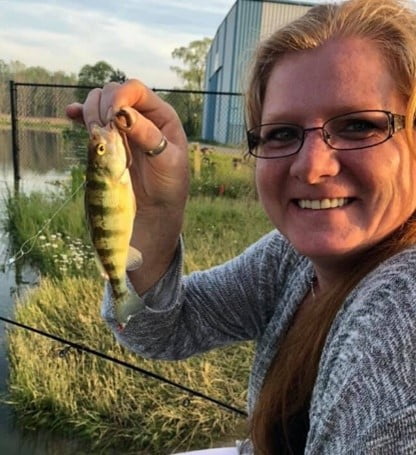
Between her deep connection with SMART’s volunteers and the myriad ways she helps them succeed, and the range of activities (spontaneous or planned), Melina is the epitome of the adage, “Work Hard—Play Hard.” And that means everyone in both her personal and professional life benefits!
PLEASE NOTE BEFORE YOU COMMENT:
SMART Recovery welcomes comments on our blog posts—we enjoy hearing from you! In the interest of maintaining a respectful and safe community atmosphere, we ask that you adhere to the following guidelines when making or responding to others’ comments, regardless of your point of view. Thank you.
- Be kind in tone and intent.
- Be respectful in how you respond to opinions that are different than your own.
- Be brief and limit your comment to a maximum of 500 words.
- Be careful not to mention specific drug names.
- Be succinct in your descriptions, graphic details are not necessary.
- Be focused on the content of the blog post itself.
If you are interested in addiction recovery support, we encourage you to visit the SMART Recovery website.
IMPORTANT NOTE:
If you or someone you love is in great distress and considering self-harm, please call 911 for immediate help, or reach out to The National Suicide Prevention Hotline @800-273-8255, https://suicidepreventionlifeline.org/
We look forward to you joining the conversation!
*SMART Recovery reserves the right to not publish comments we consider outside our guidelines.*
Subscribe To Our Blog
Join our mailing list to receive the latest news and updates from the SMART Recovery Blog.
You have Successfully Subscribed!
SMART Recovery is excited to announce the launch of a women’s only, weekly, SMART Recovery Online (SROL) meeting on Saturday, March 13th, at 8:00 p.m. ET.
According to facilitators itslizzie and JunosMom:
This meeting is a key addition to the SMART Recovery Community calendar, because the need is there. We know recovery focused towards women is important and we’re honored to be a part of their journey.
If you are a woman (cisgender or transgender) or a non-binary individual who identifies with women’s communities, and if you are in or seeking recovery, you are welcome here.
- Registration through SROL and password required.
- The password will be posted in the Women’s Form.
- Verifications will be provided.
PLEASE NOTE BEFORE YOU COMMENT:
SMART Recovery welcomes comments on our blog posts—we enjoy hearing from you! In the interest of maintaining a respectful and safe community atmosphere, we ask that you adhere to the following guidelines when making or responding to others’ comments, regardless of your point of view. Thank you.
- Be kind in tone and intent.
- Be respectful in how you respond to opinions that are different than your own.
- Be brief and limit your comment to a maximum of 500 words.
- Be careful not to mention specific drug names.
- Be succinct in your descriptions, graphic details are not necessary.
- Be focused on the content of the blog post itself.
If you are interested in addiction recovery support, we encourage you to visit the SMART Recovery website.
IMPORTANT NOTE:
If you or someone you love is in great distress and considering self-harm, please call 911 for immediate help, or reach out to The National Suicide Prevention Hotline @800-273-8255, https://suicidepreventionlifeline.org/
We look forward to you joining the conversation!
*SMART Recovery reserves the right to not publish comments we consider outside our guidelines.*
Subscribe To Our Blog
Join our mailing list to receive the latest news and updates from the SMART Recovery Blog.
You have Successfully Subscribed!
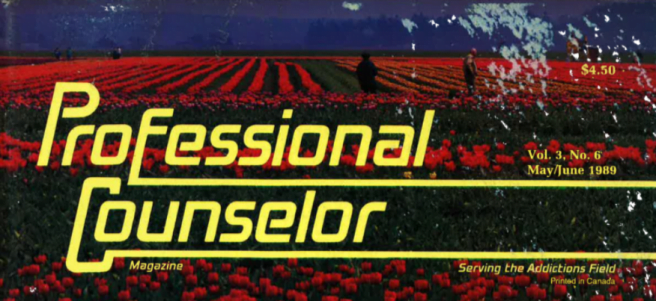
A friend recently shared a copy of the May/June 1989 issue of Professional Counselor Magazine. I thought you might find this portion interesting.
The field has been wrong about a lot and learned a lot, but it’s worth knowing that we were engaged in advocacy opposing the war on drugs in (and before) 1989, while incarceration rates were climbing but still a fraction of their peak.
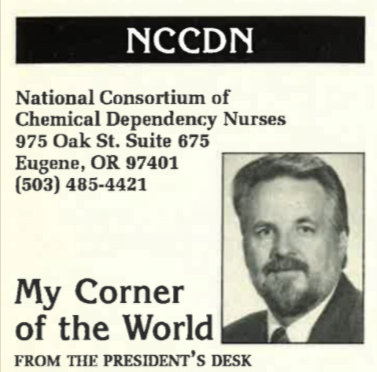
In my travels, I keep meeting genuine heroes…. They come in all sizes, shapes, colors, and genders.
These people are the individuals and groups fighting the real “war on drugs” in America. No, these people don’t wear fatigues, they go into battle without guns, in fact, without any weapons but their expertise. They fight with their professional proficiency or their recovery or, in many cases, both. They fight in the real “trenches” of the “war on drugs”—recovery.
…Could it be that we’re losing one war on drugs after another because we are fighting with the wrong weapons? It seems that we need to reassess “supply-side” chemical dependency and look at the disease rather than the borders.
It all takes money and support, and until we focus on the source of the addiction, instead of the source of the substance, I’m afraid we’ll continue to lose one “war” after another.
As treatment professionals, we have to educate the government, our townspeople, and, maybe most importantly, the mass media. Our voices can be heard as individuals and organizations if we concentrate on the disease and help the public understand that we can never build a wall around America. Reveal the real “heroes” to the media and officials in your area and, most importantly, get involved!
Randy Bryson, RN, President, National Consortium of Chemical Dependency Nurses

This is not my first post on gratitude, I posted this one back in 2019 and more recently this one in 2020 writing about what I call my “Eeyore Brain.” This is a subject I am deeply reflective on because I have struggled with it over my life. As this 2016 article from Forbes notes, our brains are not wired for happiness, our brains are wired for survival. I hear that.
I made it through a lot of stuff because I can often see dangers coming my way early. It has served me well in life against some very real threats to safety. However, it does leave me at times hypervigilant, struggling to enjoy the moment or see a glass half full in situations where I am privileged to even have a glass. For every real lion in the grass, there are a few shapes that seem like lions at first glance. From talking to thousands of people in early recovery over the decades, this is relatively common. I have to work hard to quiet this stuff down and feel at ease. I know I am in good company.
Gratitude and its relationship to recovery is one of the many facets we really do not know enough about even as it is a really common practice associated with sustaining recovery. Supporting people in early recovery and asking them to regularly consider things that are positive around them is a pragmatic thing I learned very early in my career. It helps people stay in recovery and reframe their circumstances. Many clinicians and peer support practitioners also use such strategies to help people think more positively and to incorporate gratitude into self-care to sustain recovery.
This pilot study described by the Research Recovery Institute of the “the “Three Good Things” exercise (TGT) asked participants to describe and report the cause/context of three ‘good’ things that happened to him/her in the past 24 hours. The outcome on the small sample suggests that describing and reflecting on three good things that happen each day is a simple way to feel calmer and less stressed for persons in recovery. Hazeldon Betty Ford Foundation has done some excellent work examining and compiling information on positive psychology and its relationship to recovery. This study using 12 step-oriented participants found that higher levels of gratitude were positively associated with post-traumatic growth, and social support; and negatively associated with stress and health symptoms. Studies have found that the practices of yoga in recovery and mindfulness in recovery can reduce reactivity (that perceived lion in the grass) and these practices are increasingly being recognized as having benefits across the recovery community.
All of these articles reference above have one common theme. We know next to nothing about these topics. That we know so little about gratitude and positive psychology and how it relates to building and sustaining recovery is referenced in every article I found. The pessimist in me believes while these are likely vital building blocks of recovery, they are not easily monetized. Nobody is going to get rich if we expand these practices across our field, much of it can be simply taught and included into self-care practices. Hence, they do not get priority for research dollars.
We must improve our understanding of how these tools may can be used to most effectively improve our outcomes to support long term recovery to improve our care and support system. Post Traumatic Growth may well be supported by the ability to reframe life circumstances in a positive way. We have done little to expand our understanding of these dynamics and how persons in recovery shift into post traumatic growth and its relationship to the process of recovery. If we can measure these facets, we may be able maximize the benefits experienced.
There is an urgent need to expand recovery research as a primary focus of our governmental institutions. I have written about how such areas of common need get set aside in a post about the tragedy of the commons. Increasing our understanding of how these tools work and how they augment and support recovery is vital to improving our ability to get more people into and to sustain recovery. If we work on this now, a decade from now we will be grateful we did.
There is an interesting parallel to draw here because as a society, we focus research on addiction (the threat) and spend almost nothing understanding solutions (recovery). We must focus on recovery research to improve recovery outcomes. As with the treatment of other major diseases, five-year recovery outcomes should be the standard of measurement. Other quality of life improvements in areas such as physical health, employment, involvement with the criminal justice system, housing, and healthy family engagement. Such research should consider “real world” conditions such as polysubstance use and measures focused on the bio-psycho-social-spiritual aspects of addiction and recovery.
There is a rich mosaic of strategies to support hope, connection, and purpose to support recovery that largely fall under the rubric of recovery capital. Recovery capital is built across individual, family and community levels. The law of attraction applies here in multiple ways. Whatever we think about, we get more of that to think about. The very same thing can be said by what we research in respect to addiction. We should focus research dollars more on how to sustain long term recovery, we probably increase the number of Americans in recovery that way.

